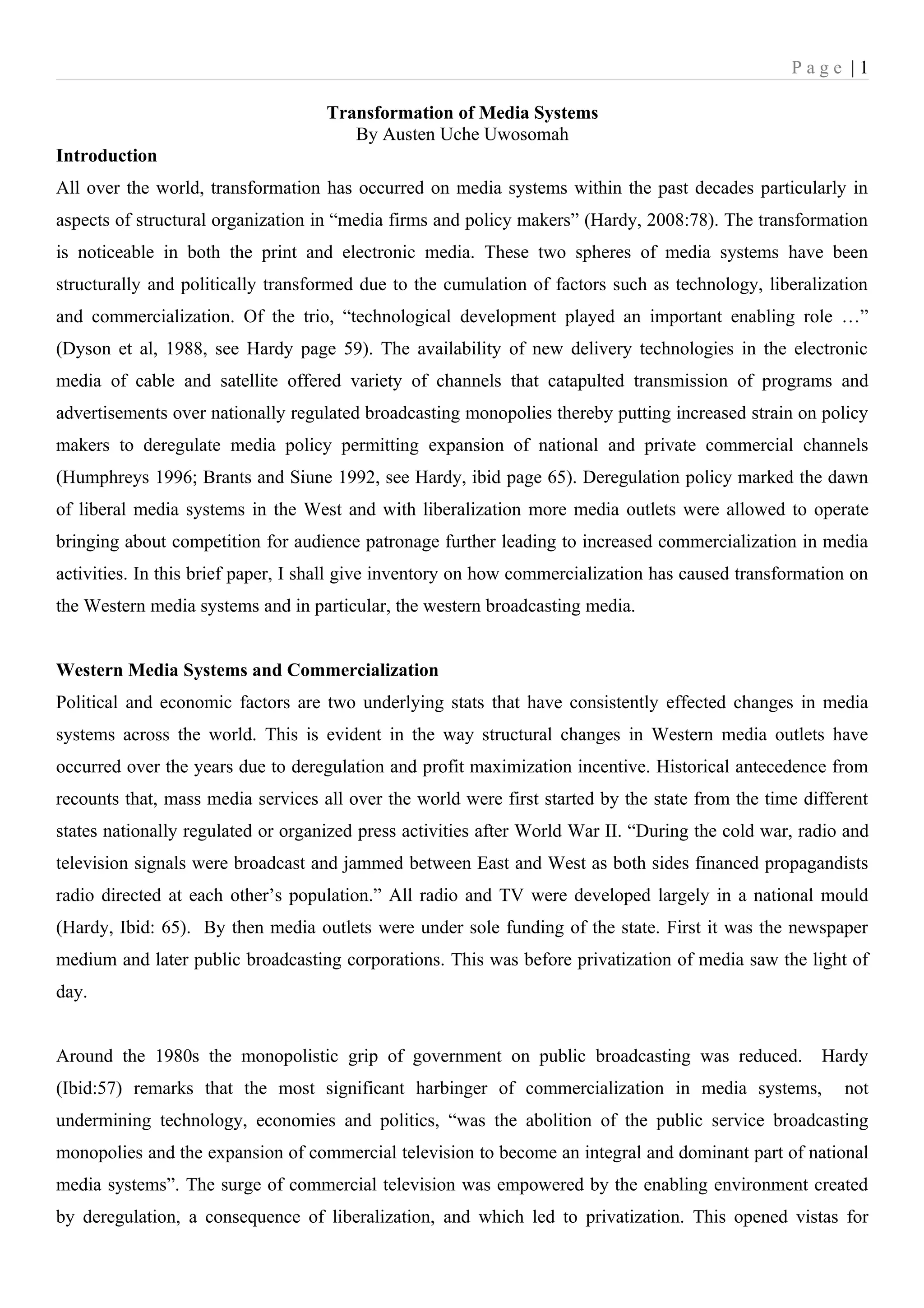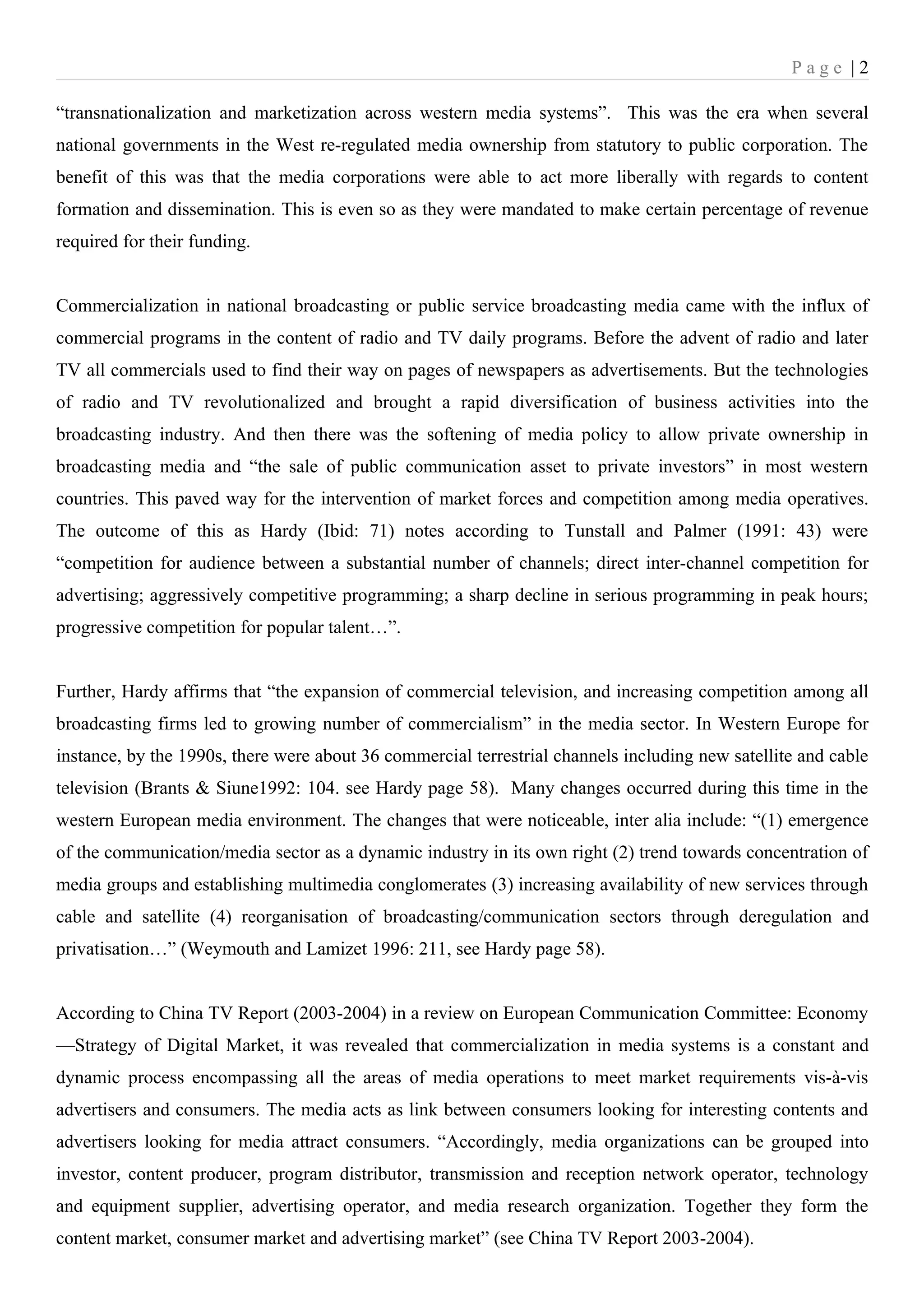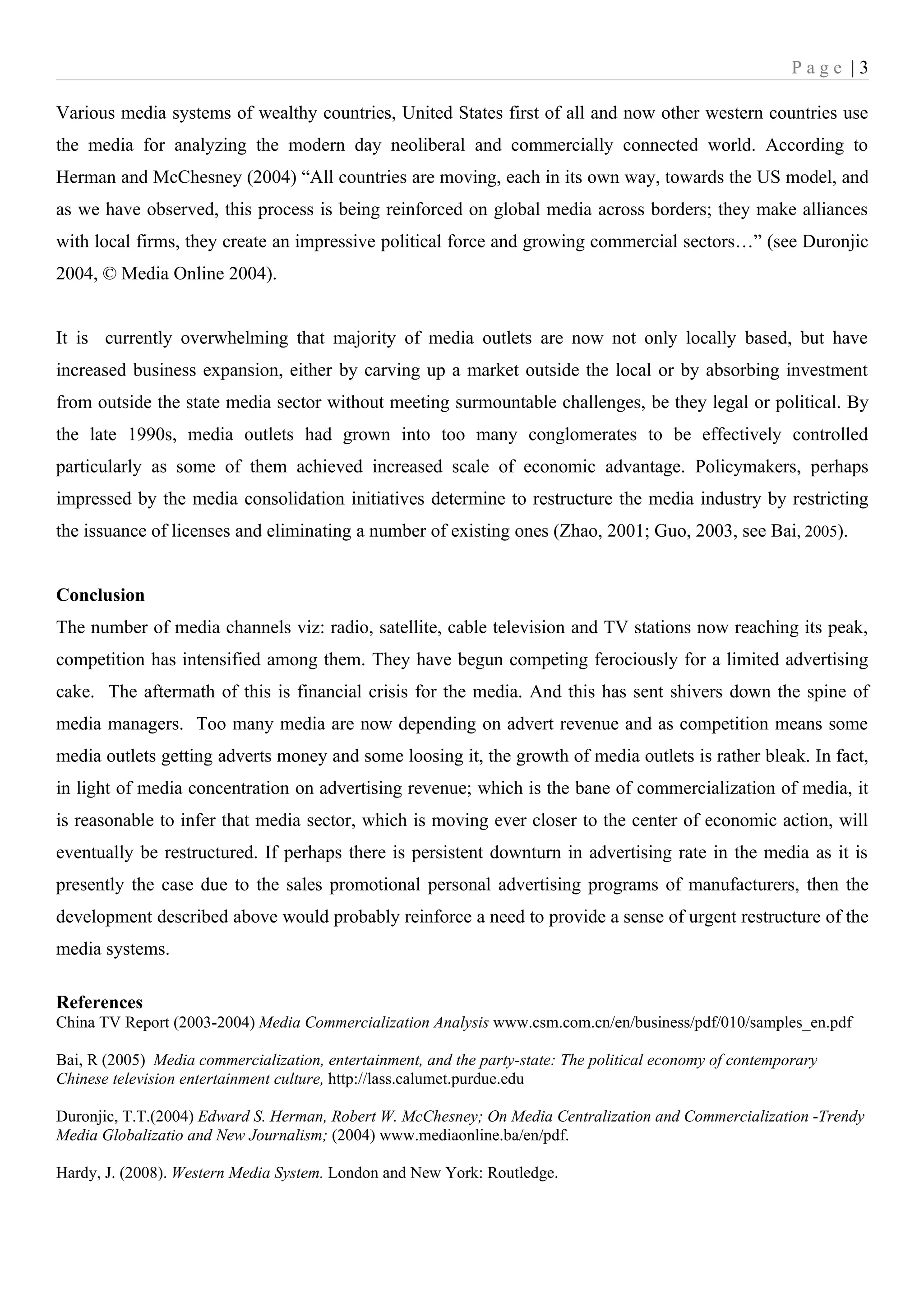The document discusses the transformation of media systems in Western countries due to commercialization over the past few decades. Technological developments enabled new delivery methods for electronic media like cable and satellite television, putting pressure on governments to deregulate media policies and permit more commercial outlets. This led to the rise of private, for-profit broadcasting and greater competition in Western Europe and the US by the 1980s and 1990s. As media consolidated into large conglomerates, they increasingly relied on advertising revenue, leading to more commercially-driven programming and financial instability for some outlets. The transformation demonstrates how market forces have come to dominate media systems.


